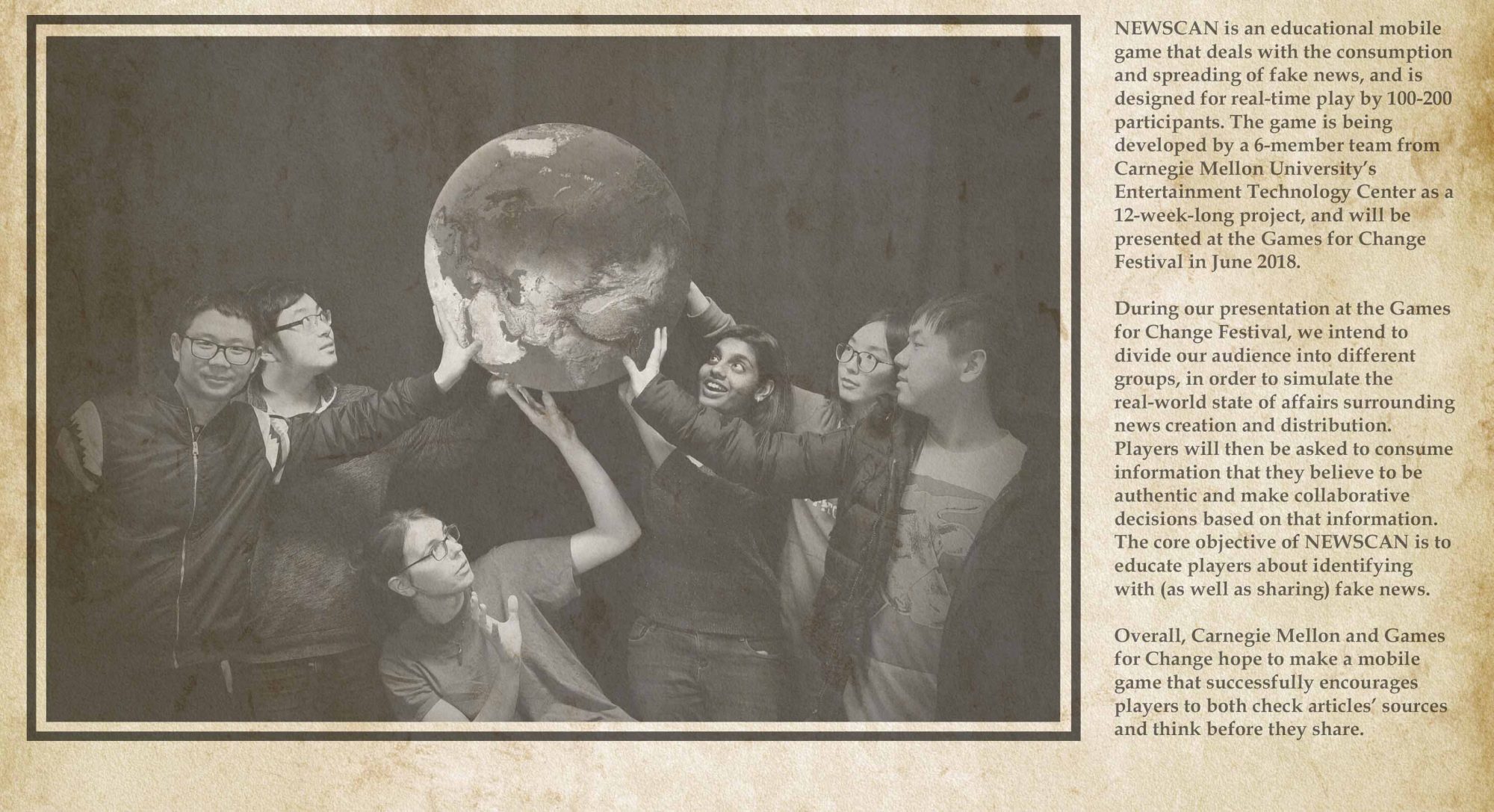Going into this week, we aimed to take the feedback that we received following our halves presentation and see what we could glean from it. Upon sorting through said feedback, we found that the most crucial issue we would need to address in the next several weeks had to do with our project’s transformational goal.
Indeed, when we met with Dave Culyba to talk about next steps for our game’s design, he reiterated that our presentation hadn’t given ETC faculty a clear idea of exactly how our game aims to transform our audience.
In order to amend this, we first sat down to reconsider the transformational goal we wanted our game to achieve. Instead of sticking with the somewhat vague goal of “teaching players about how fake news spreads,” we focused in on the goal of “making people more skeptical of news that they encounter on social media.” This shift in goal simultaneously a) clarified what steps we needed our game to achieve/how those steps needed to feel for players and b) allowed us to more easily come up with potential methods of measuring our transformational goal in terms of player behavior changes (for instance, we could see how much our game discourages players from liking and/or clicking on random posts on social media by providing players with such a post at the beginning/ending of our game and observing their behavior).
On Thursday, we went ahead and built a basic web-based prototype of our game’s first phase (note that this prototype only constituted the part of our game that would be visible on players’ phones; the part of the game that would be visible on a large projector/screen was not quite ready for playtesting at the time of this writing). In this prototype, players are given a basic story/premise, and are then able to go through a series of pages that allow them to create a basic news article. Players can then “post” this news article (using a faux social media site we’ve fabricated for this project) and receive a certain number of followers based on the content of their post (which is calculated by measuring the negativity and emotionality of players’ posts).
The next day, while we were still exploring new overarching design concepts, we decided to go ahead and playtest the prototype we had built the previous day at Inclusive Innovation Week in downtown Pittsburgh anyway, just to see what kind of reaction we would get.
While some playtesters felt that they weren’t exactly sure what they were doing and/or felt that our prototype didn’t contain content choices that they personally would have used in creating news-related content, our team was pleasantly surprised at how engaging our prototype was for people with numerous different viewpoints/play-styles. Indeed, some of our playtesters immediately created incredibly inflammatory posts in a bid to maximize their follower count, some playtesters said that they wanted to go through our prototype again to see if they could improve their follower counts, and some playtesters said that they would sacrifice the temptation of a high follower count if that meant sticking to their morals. What’s more, many of our playtesters were extremely curious to see how many followers other players were getting.
This shows that the first phase of our game is not something that we want to throw away (as we had been considering), as it has the potential to be competitive, fun, and supportive of multiple different play-styles, all of which are good things to know as we begin to ramp up production.

